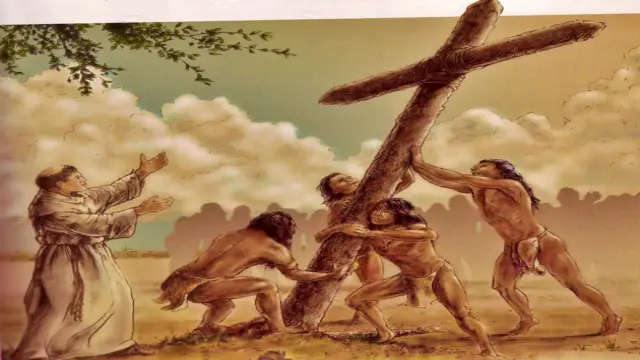The Untold Story of the Guale Revolt!
The history of North America is marked by the arrival of different colonial powers, each with unique motivations. The Guale revolt against Spanish rule in the late 16th century is a significant event that highlights the clash of cultures during this period. This article explores the reasons behind the colonial powers’ presence in North America, the impact on Native societies, and the story of Juanillo, a key figure in the Guale revolt.
Colonial Powers and Their Motivations
Different colonial powers came to North America for various reasons. Here’s a brief overview:
- French, Dutch, and English: These nations were primarily drawn by the lucrative beaver trade. The demand for beaver pelts in Europe created a thriving market.
- Spanish Adventurers: The Spanish were motivated by rumors of vast wealth in the Americas. They also aimed to convert Native populations to Christianity. While some missionaries believed they were doing good, their actions often had devastating effects.
Impact on Native Societies
The arrival of Europeans had profound consequences for Native American communities:
- Disease: New diseases brought by Europeans decimated Native populations, who had no immunity.
- Cultural Suppression: European powers often prohibited tribal rituals and practices, undermining Native societies.
- Dependency: Many Natives became reliant on the mission system for food and resources, disrupting their traditional ways of life.
The Guale Tribe and Juanillo
The Guale were part of the Mississippian Culture, residing in what is now coastal Georgia and the Sea Islands. Their society was matrilineal, and they lived in a loose confederation of towns and villages.
Who Was Juanillo?
Juanillo was a prominent leader among the Guale. Here are some key points about him:
- Elite Background: He came from a high-ranking family and was already a leader of the Tolomato, a division of the Guale.
- Polygamy: Juanillo had two wives, a practice that conflicted with Spanish missionaries who had outlawed polygamy.
- Cultural Resistance: He believed in preserving his people’s traditional beliefs and practices, which put him at odds with the Spanish.
Spark of Rebellion
Tensions escalated when Spanish missionaries insisted that Guale leaders choose a successor who conformed to their beliefs. Juanillo, frustrated by these demands, decided to take action.
Attack on the Mission
In 1597, Juanillo led an attack on the Nuestra Senora de Guadalupe de Tolomato mission. Key events included:
- Killing a Friar: Juanillo and his followers killed a Franciscan friar during the attack.
- Call to Arms: He urged neighboring tribes to join the fight against the Spanish.
Escalation of Violence
The rebellion quickly spread, resulting in the deaths of five more missionaries. The Spanish authorities in St. Augustine responded swiftly:
- Relief Party: The Governor organized a relief party to quell the uprising.
- Scorched Earth Policy: Unable to catch Juanillo, the Spanish destroyed crops in Guale villages to weaken their resistance.
Downfall of Juanillo
Despite initial successes, Juanillo’s rebellion faced challenges. Eventually, he was trapped in the stockade town of Yfusinique. Here’s what happened next:
- Final Confrontation: A group of Natives allied with the Spanish killed Juanillo and several Guale warriors.
- Aftermath: The unrest continued for several years, but the rebellion was effectively suppressed.
Fragile Peace
By 1600, some Guale leaders sought peace. They traveled to St. Augustine to pledge allegiance to the Spanish King. However, the conditions set by the Governor were strict:
- Cease Uprisings: The Guale were required to suppress any future rebellions.
- Limited Success: This approach did not yield lasting peace.
Change in Governance
Eventually, a new governor allowed the Guale to practice their traditional ways. This shift helped restore some peace between the Spanish and the Guale.
The Guale revolt against Spanish rule is a powerful example of the cultural clashes that occurred during the colonial period in North America. Juanillo’s leadership and the subsequent rebellion highlight the struggles of Native peoples to maintain their identity and autonomy in the face of European colonization. Understanding these events is crucial for grasping the complexities of early American history.
Learn More About the Guale Revolt and Its Impact on History!

